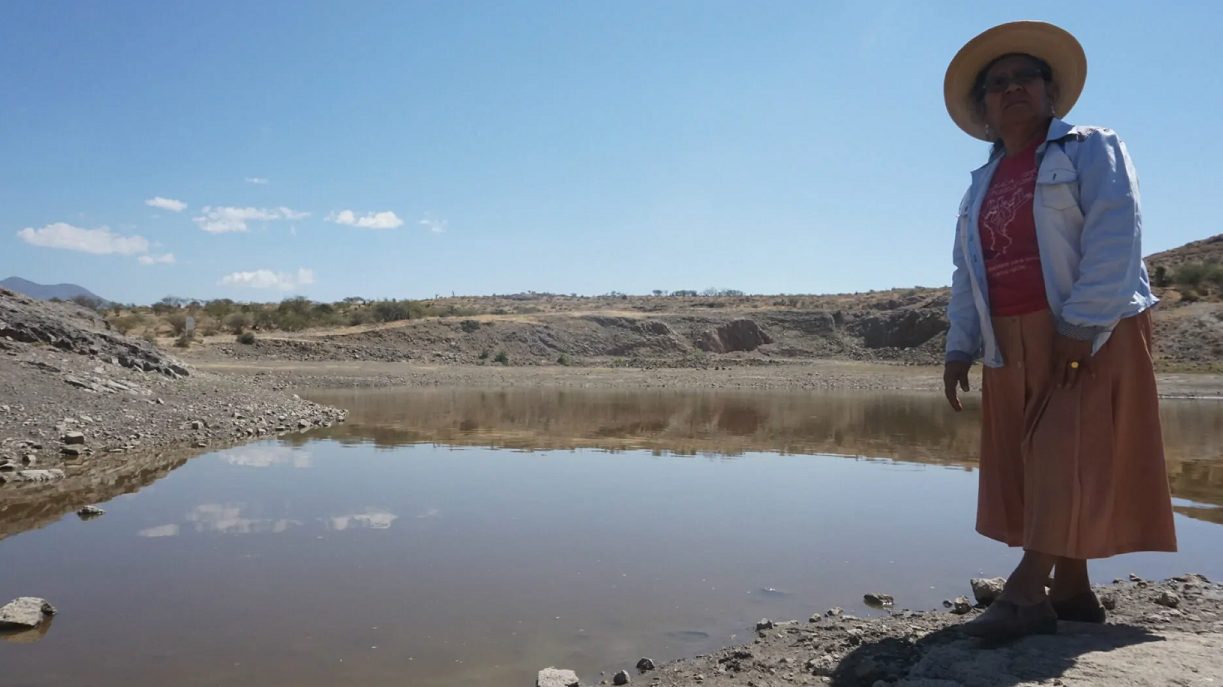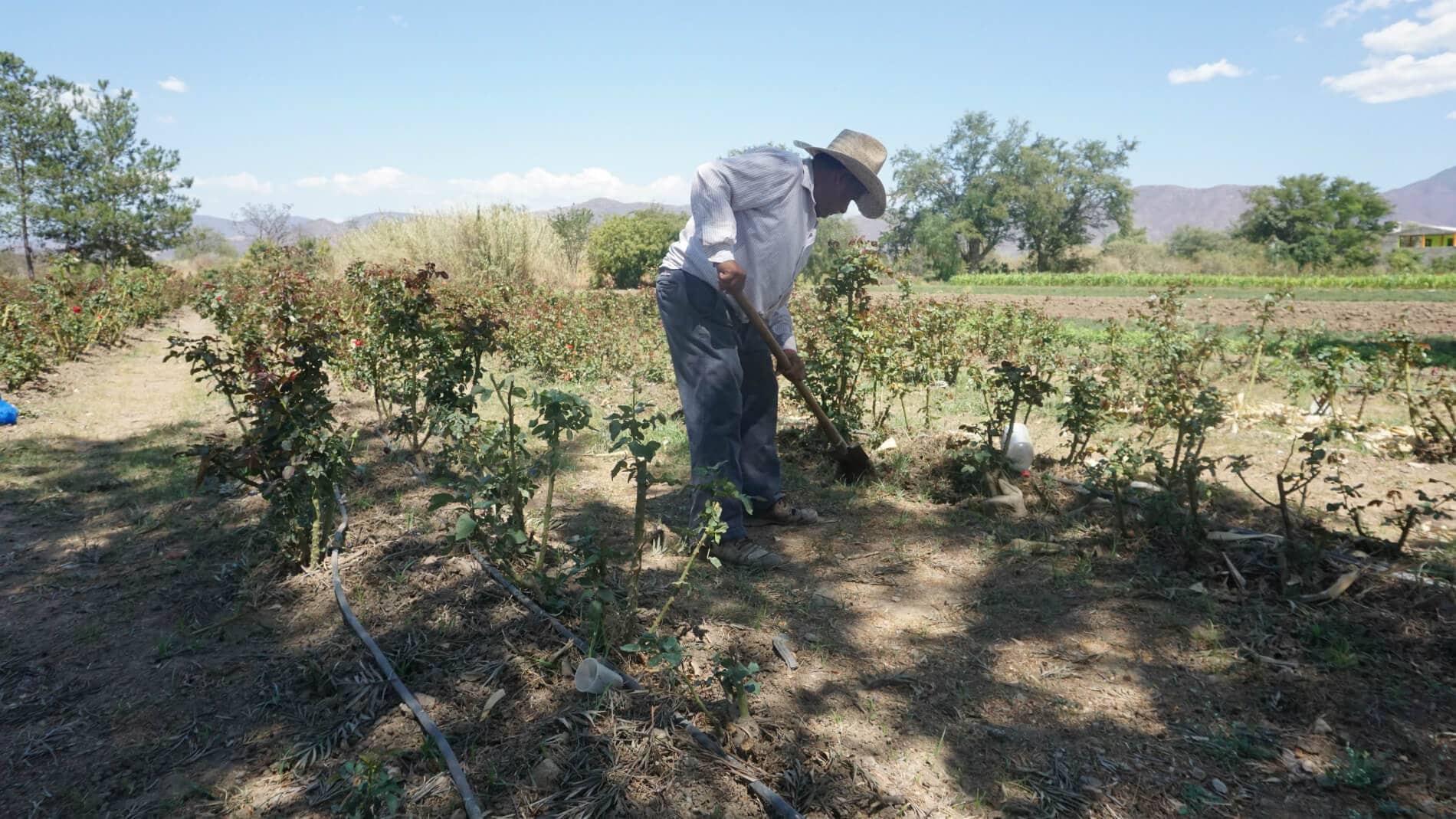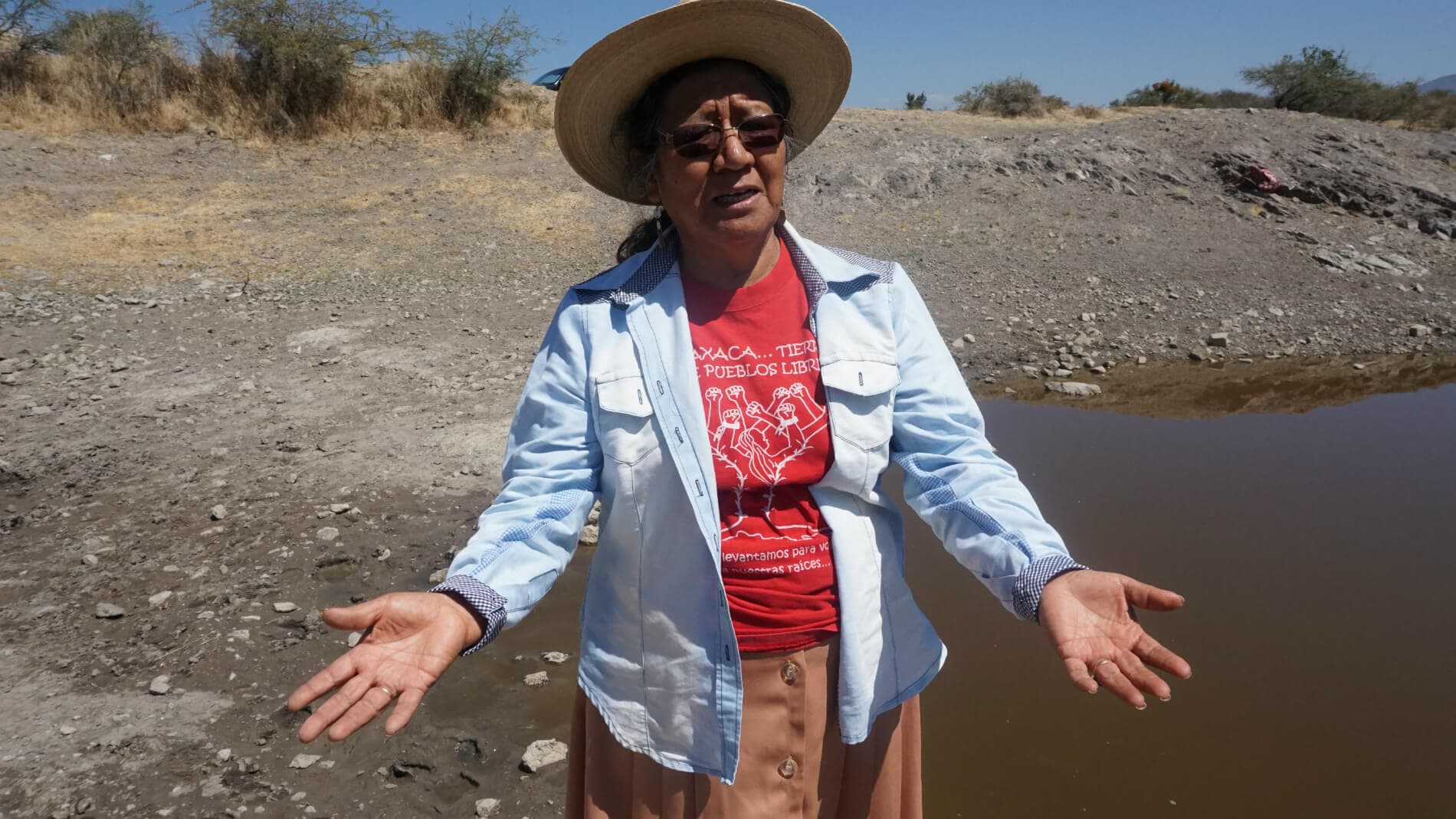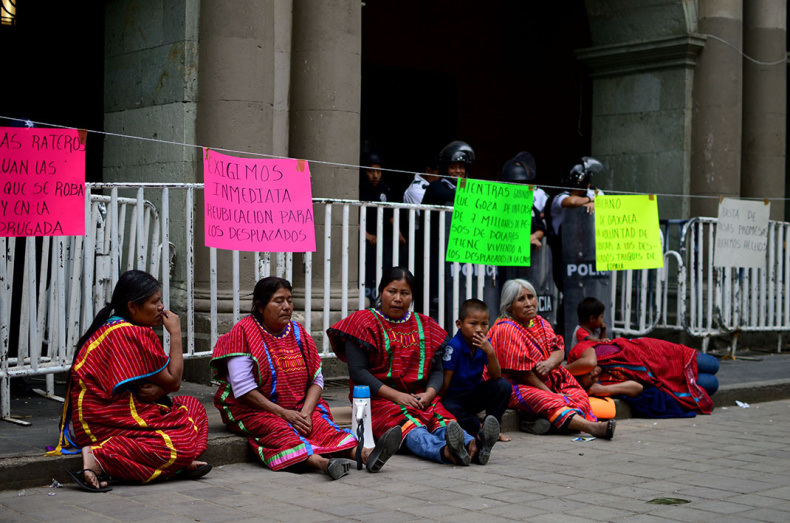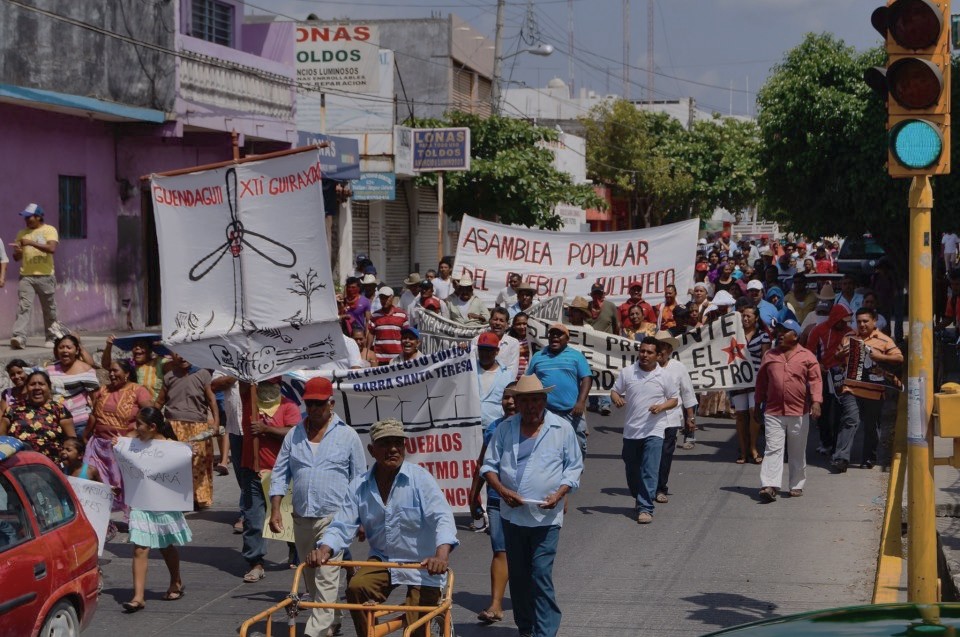
by DGR News Service | Jul 4, 2020 | Biodiversity & Habitat Destruction, Indigenous Autonomy
Chris Straquez describes plans for a 1500 km railway project in southern Mexico, the potential for environmental destruction, and how developers justify their genocide against indigenous people.
The Mayan Train Project: Destruction of Indigenous Land
By Chris Straquez
The history of modern train industry started with the appearance of first steam engines, which enabled humanity to transport goods and people in a faster, reliable and cheaper way into a new age in the life of industrial revolution, human expansion and global economy. This, in turn, caused a great expansion of railways, machine improvements and enabling goods and people to be transported safer and faster. Today diesel engines, electrical trains and maglev high-speed bullet train network the entire earth. All these trains were developed from the steam engine.
Trains allowed us to save time covering long distances with huge cargoes which of course meant huge profits for businesses. People had faster means to get to and come from work. Business profited and personal vacation trips increased considerably. The creation of the regional time zones was due to the necessity to plan for the arrival and departure of trains from station to station. For the first time, geographical zones were divided up and assigned times so the ‘powerful’ railroad companies could organize travel schedules, forever changing the dynamic of time.
An entire nation connected by railroads, the traditional conception of space and time annihilated. Pathways altered to accommodate for terrain, locomotives pathways through the terrain. Tunnels made through mountains and bridges allowed for crossing valleys and rivers. A straight line from point A to point B. This, of course, meant many natural environments had to be gutted for the whole infrastructure of trains and railroads to become a reality.
Is there something Mayan about this train?
The Mayan Train is the signature project for the administration of Andrés Manuel López Obrador, Mexico’s current President. This project will use the right of way of the Isthmus of Tehuantepec Railway all along Palenque to Valladolid. Valladolid current rights of way from different infrastructures such as roads, highways, and drivelines, among others; will be used in order to reduce the environmental impact caused by the project, and reduce the costs of new rights of way. The project includes nearly 1,460 km of railways in the Yucatan peninsula that will connect 5 estates: Tabasco, Campeche, Chiapas, Yucatán, and Quintana Roo.
During the Daily Presidential Morning Conference, it was communicated that an investigation carried out by The National Fund for Tourism Development (FONATUR in Spanish) found that rights of way of many estates were not ‘recorded’. That a register did not exist, and many claims have been lost by the federal government from people who had never been paid for the rights of way in their lands which amounts approximately $750 million dollars in total. The Mayan Train project, in case you are wondering, will cost around 6 to 8 billion dollars, and is expected to bring more than three million visitors a year to the region; to archaeological sites and the area’s vast biodiversity such as Calakmul and Sian Ka’an.
The principal tourist territories are Cancún, Tulum, Palenque, Chichén Itzá and Calakmul biosphere, which is considered as the main location for the railroad routes, since it harbors 1,729,738 acres of a high biodiversity, considering 1,569 plant, 107 mammal, 398 bird, 84 reptile, 19 amphibian and 48 freshwater fish species.
Experts have warned of environmental risks, including the survival of certain species, disturbances within underground water networks, such as the Sac Actún underwater cave system and the Dos Ojos system in Tulum, Quintana Roo. The aquifers provide nourishment to trees and wildlife as it is one of the biggest fresh water storage areas on the planet. The erosion and fissuring of landings above those aquifers would allow an unbalance on the vital source for the jungle and represent an issue for local communities.
One of the world greatest biospheres in danger.
The Mayan Train’s route covers 15 federal protected areas, 20 state protected areas, rich geological regions and hydrological resources. There is a huge risk of extinction of flora and fauna. In 2018, the National Alliance for Jaguar Conservation conducted a nationwide census, finding that population was around 4,000 across five regions in Mexico, mostly distributed around Yucatán’s peninsula, which is also one of the railway’s main routes. This will make protecting of this species even more difficult for environmental organizations.
The Mayan Train will interfere the Calakmul Biosphere, which is considered the largest forest reserve, containing 6500 well-preserved archeological structures. It is the third most important ecological area and is sparsely inhabited. Once penetrated by the train, the inevitable consequence will be development at the expense of nature.
One of the most crucial areas that would be made vulnerable by the Mayan train routes is Laguna Bacalar in Quintana Roo, already water-polluted by the proliferation of hotels and private houses on its surroundings, an increase in tourism would turn it into a cesspool.
Moreover, the megaproject will bring about the fragmentation and destruction of one of the world’s last pristine rainforests. The railway will cut through the heart of the Mayan jungle, and since the natural wealth will be endangered, the megadiverse ecosystem would be damaged, and refuge for roughly 10 percent of the world’s known species may disappear.
Yet another threat to indigenous ways of life.
The Indigenous Regional Council (a settlement of 82 indigenous communities) across the Mexican Mayan train course estates would be crucially affected. The disruption to the Calakmuk Biosphere Reserve would decrease their economic development, forest resource tracking, as well as their main cultural heritage. I understand that environmentalists and local societies are against the construction of the railway, since ecosystem issues would be highly damaging for the territory.
Indigenous groups, and their conservationist and academic allies, call the train “an act of war” and López Obrador’s bid to ingratiate himself to Indigenous communities “a mockery.” They warn that the train will not only devastate southern Mexico’s ecosystems but also trigger unsustainable development and further marginalize the communities living there. These critics—the most prominent of which are the Zapatistas, who led an armed insurrection against the federal government in 1994—say the project will repeat the mistakes of development in Cancún and Tulum and bring cartel violence, corruption, and mass development (read destruction) to the Mayan forest. The Zapatistas have said they will defend the land with their lives.
These groups also said the Mayan Train poses a risk to the cultural identity of the indigenous people who live in the communities through which the tracks will run. Indigenous culture, namely that of the Mayan people who live in the region, could be marketed as a commodity, they argued. They also renewed their criticism of the Mayan Train consultation process in 2019, which was described by critics as a sham and an empty gesture. A vote on the project found 92% in support but the United Nations said that the entire consultation process failed to meet all international human rights standards.
In their new broadside, the groups charged that the government had made a ‘unilateral’ decision about ‘the future of the communities and indigenous peoples’ through which the train will run under the pretext that they will be ‘the main beneficiaries.’ However, the “main role” of the local indigenous population will be to provide “cheap labor” for the railroad’s construction, they charged, warning that the project will perpetuate the “systematic discrimination” against indigenous people that the Mexican state has promoted for years. The thousands of jobs that will supposedly be created will most probably be precarious, poorly paid, temporary jobs without social security guarantees.
It’s not about the lives or the poor and the oppressed, but a business opportunity.
President López Obrador has said that construction of the Mayan Train will help the economy recover from the coronavirus-induced crisis, asserting that it will create 80,000 jobs this year and 150,000 in 2021. He pledged that the project will be finished in 28 months, or by October 2022, stressing that no excuses will be accepted for delays. The project will be carried out in 7 sections, each one in charge of the following companies:
1ST SECTION: Mota-Engil México, a Portuguese conglomerate that received several profitable contracts in the former Mexican administration, and China Communications Construction Company LTD that has international claims of fraud and blackmailing, most notoriously in the Philippines.
2nd SECTION: CICSA S.A. de C.V. and FCC Construcción S.A. both owned by Mexican tycoon Carlos Slim Helú. CICSA was one of the key players in the construction of the now failed Mexico City-Texcoco Airport (NAICM) and FCC was involved in the Odebrecht scandal.
3rd SECTION: Construcciones Urales (Grupo Azvi) and Gami Ingeniería e Instalaciones. Gami was also involved in NAICM.
4th SECTION: Ingenieros Civiles Asociados, better known as ICA. Involved in NAICM, too, and it has oil, gas and infrastructure in Chiapas, Tabasco, Campeche and Quintana Roo.
5th SECTION: Pending, BlackRock Incorporated would be the company that would keep this section of construction that runs from Cancun to Tulum. The area with the most significant economic relevance of the entire project since it launched an Unsolicited Proposal (PNS) two years ago to FONATUR. It is expected to be the winner of the contract that would be announced on August 23.
6th and 7th SECTION: Pending, but believed to be in charge of the Secretariat of National Defense (SEDENA).
Rogelio Jiménez Pons, director of FONATUR, who is managing the project, said that the Maya Train will help to lift more than one million people out of poverty. In reality, this mega project represents a new paradigm of economic disintegration, regional (under)development and social (in)equity.
Relationship with animals, places and plants.
We name living beings. We name things that are not alive. To draw the line between what is ‘living’ and what is ‘non-living’ can vary from micro to macro, from ideology to religion, from land to empire, but to me a living being is one whom I can establish communication. I have named not only my cats or dogs but I have given a name to each car I had, and also guitars and machines… I can only talk from my own experience, but I can’t remember the last time I had a pep-talk with my mobile screen or an argument with my car. Whereas I have communicated with animals and sometimes plants. Something or someone I can kill or exploit can’t have a name. I would get too sentimental if I actually had to do that. Naming something gives it some importance; how many of us haven’t named an animal friend or given nicknames to people, plants and places around us?
Naming something undoubtedly establishes not only a reference point but a connection. A connection to the land and its inhabitants boosted by entering into a relationship with these individuals, because that is what they are: individuals. If you spend enough time around them, you will notice that we have so much in common and they can communicate in such interesting ways… if we would only listen. Establish communication with them? That is pure non-sense! These are THINGS, objects, resources. They are not alive. I can’t use and abuse them if I perceive them as a living entity, can I? If I name living entities would I be able to carry out a project, say, a trans-isthmic train through important Mayan archeological sites and natural reserves? It would traverse (read violate) the Yucatan Peninsula, home of human communities such as the Mayan Yucatecas, Choles, Tzetzales, Mixques; land of the green iguana, tapir, mockingbird, swamp crocodile, many different species of bats, felines, primates, insects and even the soil. All these living beings are seldom mentioned in the Mexican media. We only know that “the train will be good for the people of Mexico.” In a country that contains one of the richest arrays of biodiversity, cultures and peoples, I always wonder who exactly these people of Mexico the government talks about are.
Issues with the Environment Impact Manifestation.
One of the biggest arguments against the Mayan train is that a proper environmental impact study was not carried out to assess potential damage by this mega project. After over a year of allegations, the Secretariat of Environment and Natural Resources (SEMARNAT) released a document, an Environment Impact Manifestation (MIA in Spanish) which explains the Mayan Train project and the long awaited environmental impact study. It includes a section called Social Analysis of the Indigenous Peoples in which the concept of ethnocide is explained. What raised the brow of people who have already checked the document is a concept called “ethno-development.”
Rodolfo Stavenhagen, German-Mexican sociologist and anthropologist who specialized in the study of human rights and the political relations between indigenous peoples and states, was a huge critic of the Western concept of “development”. In his book, The Ethnic Question: Conflicts, Development, and Human Rights he portrays how this “Western development” has terrible effects on indigenous peoples. He mentions that development try to promote the idea that the communities will benefit from the capital investments, technological innovations and modernization. The reality is something quite different; these developments have negative and noxious effects on the masses, especially indigenous communities. Such injuries have not been correctly documented or understood, but everyone can think in terms of economic, social and environmental damages instead of benefits.
Stavenhagen defines ethnocide as “the process in which a culturally distinct people, usually named ‘ethnic group’, loses identity due to policies designed to undermine their territory and their base-line resources; language usage and both political and social institutions; customs, art, religious practices and cultural values. When a government applies these policies then it becomes a culprit of ethnocide which can be either economic or cultural. Economic ethnocide when it is made under the guise of development and cultural when it pretends to eradicate ethnical minorities in order to give way to a Nation-State.”
Ethnocide and Ethno-development.
Once the MIA defines what ethnocide means, it states: “Ethnocide can have a positive turn: ‘ethno-development’, which can be possible if indigenous peoples affected by the development are involved in the development process and benefit administration, in this case we can understand it as a participative process for the indigenous communities to become involved not only as established in the OIT 169 Convention, but from the proper plan-ification and appropriation of the development project for their communities in which the benefits are observable.” Ethno-development is defined as the social capability of indigenous communities to build their own future, using teachings characteristic of their own historical experiences, real and potential resources of their culture, in accordance to a project that is adaptable to their own values and future aspirations.
The overall objective of the MIA, is to be a component that fosters ethno-development of the indigenous peoples that are encountered inside the Regional Environment System (SAR). Indigenous communities are being involved with a consultation process, pretending that the project respects and guarantees their rights and seeks to adapt their values and future aspirations to reach sustainable community development.
Sara López, member of the Regional and Popular Indigenous Council of Xpujil (CRIPX), one of the main organizations against the Mayan Train project, said that the mega projects will strip people away from their territory, their life, and under the excuse of development they [governments and corporations] want to eradicate the indigenous peoples. “It is not a mega project for the peoples. For us, the poor, there is no project, we resist and live from what we work and harvest, [the project] is not for us. There are 85 companies that have invested in this project: [the benefits] are for the national and international companies.”
The Power of Association and Relationships.
To be clear: most people don’t give a fuck about animals, rivers, trees, anything non-human for that matter. Even when it comes to our own species, some humans are considered more important than others. Caring about both humans and non-humans requires for us to enter into a relationship with them. Yet, in this throw-away society, it seems that the only long-standing relationship we have is over overconsumption. We name and establish a relationship with cities, tablets, video game consoles, all kinds of machines, however, they cannot really enter into a relationship with us; we use them and dispose of them; another copy, another unit, another gizmo that will become obsolete in a couple of months or weeks.
Our lack of empathy resides in the quality of our relationships. Let’s reconnect with the living and stop transforming the living into dead consumables. Have you looked at your animal companion or a wild one directly into their eyes? Have you noticed all the facial expressions? The sounds they can make? The movements they perform? Everything is so full of expression. Have you contemplated flowers, leaves, trees? How they sway with the wind, how they stretch themselves to the sun? How they sulk when they are hungry or thirsty? Have you just stared at land, sea, mountains? The astounding quantity of voices, and eyes, and hearts pulsating in a symphony so full of movement, sound, color that makes you feel alive? If you can feel the life within yourself, you can feel the life around you.
It is there for us to see… if we would only observe, we would notice it is there and that inexorably changes who you are and how you relate to the environment.
Featured image by DJ Sturm, licensed under the Creative Commons Attribution-Share Alike 3.0 Unported license.



